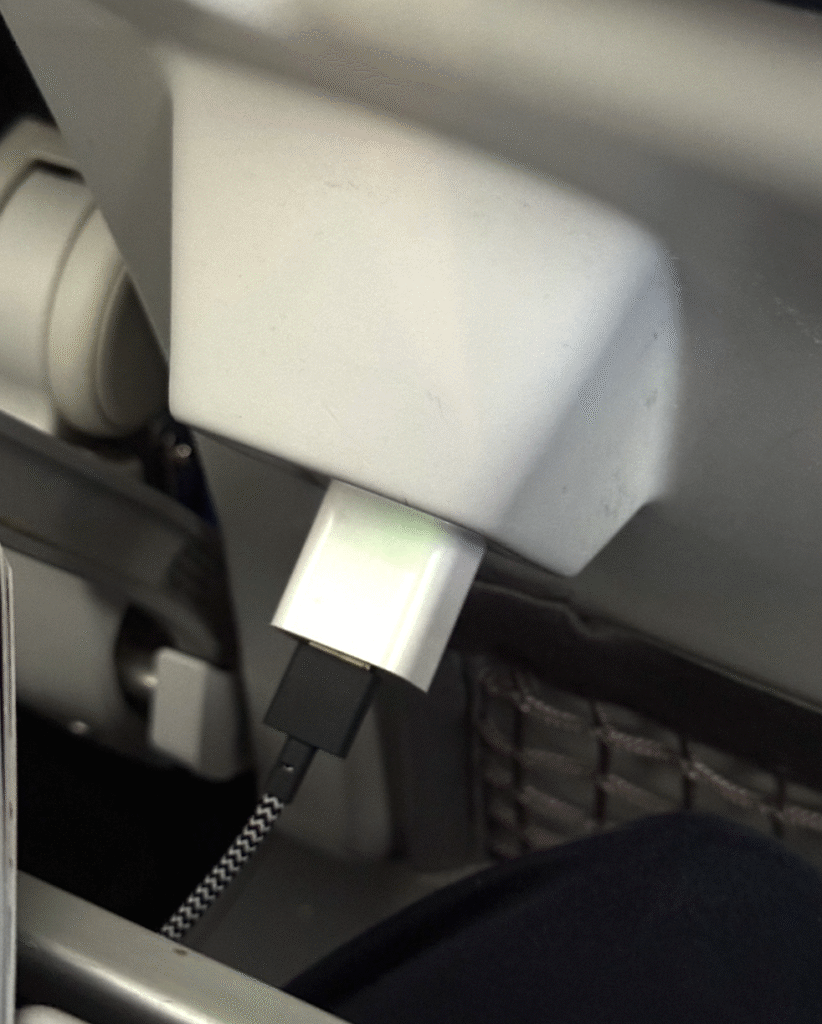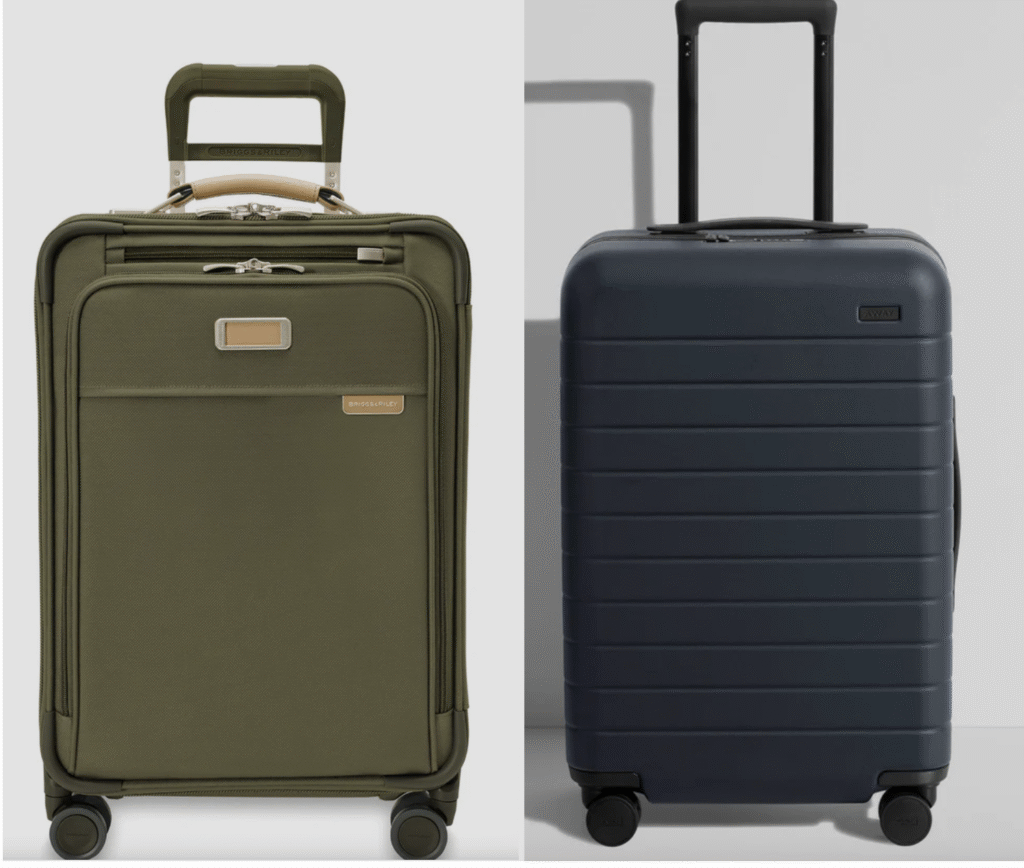Luggage pack-off:
My wife has long sworn by her trusty Briggs & Riley expandable soft-sided carry-on rollerboard. It’s been her travel companion for years — durable, familiar, and once considered the gold standard. I used to have the same bag until I replaced mine with a cheaper Away hard-sided model of the same size. Ever since, I’ve been trying to convince her that her old favorite just doesn’t measure up anymore.
On our recent trip, I had her try mine — rolling it through the airport, down sidewalks, and across rough pavement to the shuttle. Within minutes, she noticed what I’ve been talking about: the Away glides with less resistance, never wobbles or tips, and handles like a much lighter bag. The Briggs, on the other hand, has front wheels that are less stable because they’re mounted on a section of the bag that can flex independently of the rest of the bag.
“But I bet the Away can’t hold as much as my Briggs,” she insisted. So when we got home, I put it to the test — unpacked my Away, and transferred every item from her stuffed Briggs into my Away. Everything fit, with room to spare. I think she’s now convinced..
While I prefer a single open compartment for packing, I’ve grown to appreciate Away’s split-shell design. One side uses a compression panel that really does squeeze things down tight; the other side is covered by a zippered mesh. And even though it’s hard-sided, the flexible rim and sides makes zipping it closed surprisingly easy. It’s a reminder that thoughtful engineering still matters, even for something as simple as luggage.
Splitwise — a travel essential:
This trip also gave mes a chance to use a clever app called Splitwise for sharing expenses. We were traveling with our daughter and her friend, which meant lots of shared costs — groceries, dinners, gas, drinks, rental car, and more. Instead of juggling receipts or swapping Venmo requests, we entered every group expense into Splitwise as we went.
The app quietly tracked who paid for what and, by the end of the trip, calculated exactly who owed whom — no spreadsheets, no confusion, no awkward conversations. You can even assign uneven shares if someone’s covering a different portion of a cost. It’s free, intuitive, and one of those rare apps that genuinely makes life easier. If you travel with friends or family and sharing costs, it’s a must-have.
Plug design fail:
Finally, a gripe — because what’s travel without one? On our Alaska Boeing 737-800 plane, I encountered one of the most poorly designed AC outlets imaginable. It was mounted beneath the tray table on the seatback angled downward. That design might look sleek on paper, but it’s a disaster in practice: the outlet’s tension springs wear out quickly, and gravity does the rest. The result? Most plugs fall right out under their own weight.

It’s a small annoyance, but emblematic of something larger — a lack of real-world testing. It’s hard to imagine the engineers who approved that design ever tried to charge their laptop at 35,000 feet.
The bigger picture:
Whether it’s luggage, apps, or airplane hardware, good design is all about empathy — thinking through how real people will use a product in real situations. The best examples, like Away’s smooth-rolling bag or the Splitwise app, make life simpler and stress-free. The worst, like that airline outlet, remind us how easily poor design can slip through when engineers or executives forget to walk in the user’s shoes. Technology should serve us quietly and competently — not make us work harder to enjoy the trip.

